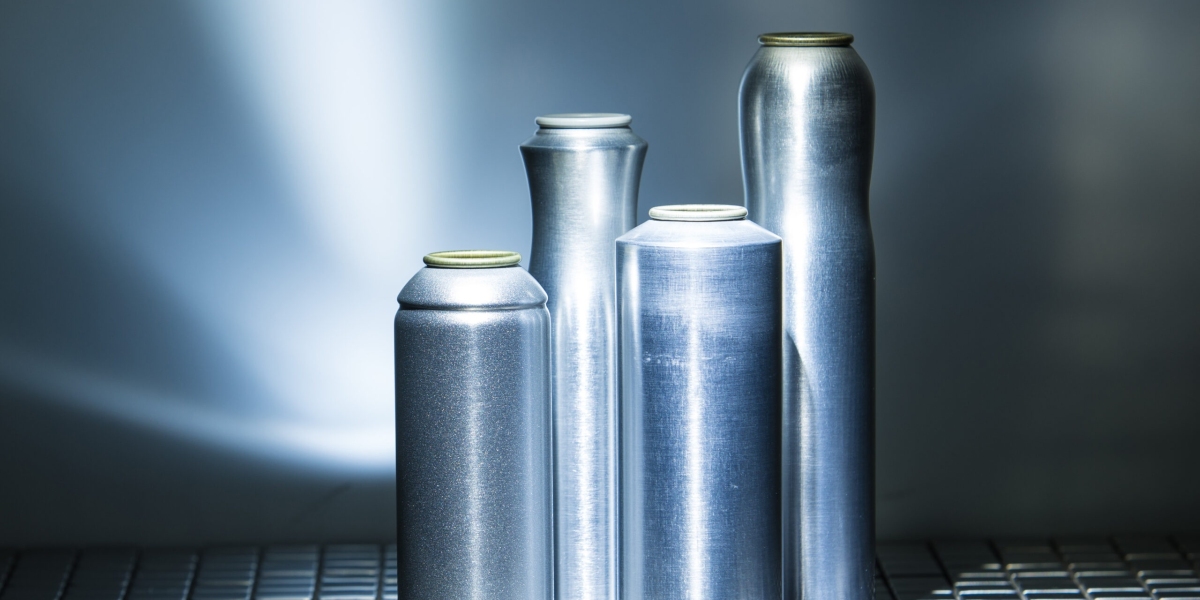The most common kind of propellant for aerosol cans is liquid gas, such as propane, butane, or isobutane. The gas within the can becomes liquid when pressure is applied to it. One advantage of this technique is that the pressure stays constant throughout the can. Aerosol spray cans are used to carry products and propellants under pressure that are intended for dispensing as spray, mist, or foam. Common materials include paints, solvents, culinary sprays, and insecticides. Because most aerosol cans are made of recyclable steel or aluminum, they are simple to handle as scrap metal when they are empty.
Aerosol cans have become ubiquitous in modern life, providing a convenient and efficient means of delivering a wide variety of products. From personal care items like deodorants and hairsprays to household cleaners, automotive products, and even food, Aerosol Cans play a vital role in our daily routines.
Historical Background
The concept of aerosol cans dates back to the early 20th century. In 1927, Norwegian engineer Erik Rotheim patented a pressurized container that could dispense liquids using a propellant. However, it wasn't until the 1940s that aerosol technology gained significant traction. During World War II, the United States military used aerosol cans to distribute insecticides to protect soldiers from malaria-carrying mosquitoes. Following the war, the technology transitioned to civilian applications, rapidly expanding its use in various industries.
Functionality and Design
Aerosol cans operate on a relatively simple yet effective principle. They consist of a canister filled with a liquid product and a propellant under pressure. When the nozzle is pressed, the propellant forces the product out in a fine mist or spray. This design allows for controlled and even distribution of the product, which is particularly useful for applications requiring precision.
The components of an aerosol can include the canister, valve, dip tube, and nozzle. The canister is typically made of aluminum or steel, providing a sturdy and durable container. The valve mechanism controls the flow of the product, while the dip tube extends to the bottom of the canister, ensuring that the product is dispensed evenly. The nozzle shapes the spray pattern, allowing for targeted application.
Versatility and Applications
One of the key advantages of aerosol cans is their versatility. They are used in a wide range of products across various sectors:
Personal Care: Deodorants, hairsprays, shaving creams, and perfumes are commonly packaged in aerosol cans, offering convenience and ease of use.
Household Products: Cleaners, disinfectants, air fresheners, and insecticides benefit from the precise and efficient delivery that aerosol cans provide.
Automotive: Lubricants, paints, and cleaning agents for vehicles are often found in aerosol form, making maintenance tasks simpler and more effective.
Food and Beverages: Whipped cream, cooking sprays, and beverage carbonation are some examples where aerosol technology is utilized in the food industry.
Medical and Pharmaceutical: Aerosol inhalers are critical for delivering medication to asthma and COPD patients, ensuring accurate dosage and quick relief.
Benefits of Aerosol Cans
Aerosol cans offer several significant benefits:
Controlled Dispensing: The pressurized system allows for precise control over the amount of product dispensed, reducing waste and ensuring consistent application.
Extended Shelf Life: The sealed environment inside an aerosol can prevents contamination and oxidation, extending the shelf life of the product.
Portability: Aerosol cans are lightweight and portable, making them convenient for on-the-go use.
Ease of Use: The simple press-and-spray mechanism makes aerosol cans user-friendly, requiring minimal effort to operate.
Consistency: Aerosol cans deliver a uniform spray pattern, ensuring even coverage and effective performance.
Environmental Impact and Sustainability
Despite their advantages, aerosol cans have faced scrutiny due to their environmental impact. Historically, the use of chlorofluorocarbons (CFCs) as propellants contributed to ozone layer depletion. In response, regulations were implemented to phase out CFCs, leading to the adoption of more environmentally friendly alternatives such as hydrocarbons and compressed gases.
Today, the focus has shifted to improving the recyclability and overall sustainability of aerosol cans. Most modern aerosol cans are made from aluminum or steel, both of which are highly recyclable. Recycling not only conserves natural resources but also reduces the energy consumption and carbon emissions associated with producing new materials. Consumers are encouraged to dispose of empty aerosol cans through appropriate recycling channels to minimize environmental impact.
Innovations in aerosol technology are also contributing to sustainability efforts. Bag-on-valve (BOV) technology, for instance, separates the product from the propellant using an inner bag, allowing for more efficient dispensing and reducing the need for preservatives. This technology enhances product integrity and extends shelf life, making it ideal for sensitive formulations.
Additionally, manufacturers are exploring eco-friendly propellants and materials to further reduce the environmental footprint of aerosol cans. Biodegradable and compostable options are being developed to address concerns about waste and pollution.
Future Prospects
The future of aerosol cans looks promising, with continued advancements in technology and a growing emphasis on sustainability. The development of new materials, innovative packaging designs, and eco-friendly propellants will likely drive the evolution of aerosol cans, making them more efficient and environmentally responsible.
As consumer awareness of environmental issues increases, there is a rising demand for sustainable products. This trend is expected to influence the aerosol industry, encouraging companies to adopt greener practices and offer more eco-conscious options.
Aerosol cans have revolutionized the way we use and apply various products, offering convenience, precision, and efficiency. While environmental concerns have prompted changes in the industry, ongoing innovations are paving the way for a more sustainable future. As technology continues to advance, aerosol cans will remain a vital component of modern life, meeting the needs of consumers while addressing environmental challenges.
Get more related content on Aerosol Cans
Get more insights on Aerosol Cans









